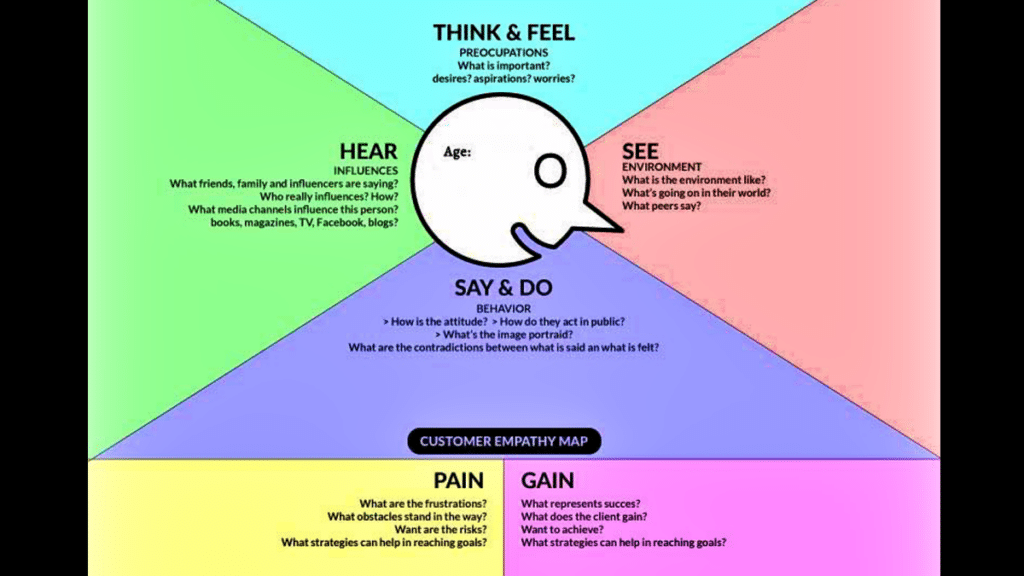Employee Experience: Using Empathy Maps to Design Better Engagement

Earlier in the year, Mr. Bartender and I attended one of our favorite events, WordCamp Miami. Since HR Bartender runs on a WordPress platform, we try to attend at least one WordCamp conference each year to keep up on the latest.
While I am by no means a developer, one of the sessions that I attended in the developer track really hit home for me. It was a session about the user experience and how developers need to have empathy for users when designing websites. The speaker said, “You are designing for other people. Who are these people? What do they think and feel?”
I immediately thought of the employee experience. Organizations are designing the employee experience and should be asking themselves, “You’re designing for employees. Who are our employees? What do they think and feel?” One way we can get to the answers of these questions is by creating an empathy map.
An empathy map is a template that helps identify what customers think/feel, hear, see, and do. Developers also use them during the design process. I must admit that I hadn’t heard of empathy maps until WordCamp, but I could see them being a useful tool for HR and management to develop personas.
Companies already develop customer personas as part of their marketing plans. And HR departments create candidate personas as part of their talent acquisition strategy. Why not create an employee persona to help with the development of the employee experience? Now, before we go any further, let me clarify that personas are not intended to be tools for discrimination and exclusion. Personas are designed to creating understanding and focus.
The idea behind using an empathy map for the employee experience is to gather data about employees and then analyze it. Organizations can collect data via face-to-face interviews, focus groups, and surveys. The information would help the organization understand employee motivations, frustrations, and goals. Because the intent of the employee experience is to increase motivation, reduce frustrations, so employees are able to accomplish their goals.
Once we have a better understanding of who our employees are (by creating personas from the empathy maps), the organization can create a plan to build or redesign the employee experience. If the company already has an employee experience strategy, then it’s possible this activity will confirm your actions. Or maybe indicate that a couple of things need tweaking. While the speaker in this WordCamp session recommended using a journey map to create the plan, I can see how a SMART plan could do the same thing. And since I’m a big fan of SMART, I would probably go that route. Bottom-line: use an action planning tool that you know yields results. Execution is key.
Finally, the speaker talked about creating stories to connect employees to the plan. I’ve been hearing more about using storytelling in the employee experience these days. My take is that this is a great way to market that the organization is listening and taking action. The speaker used a simple 3-step sentence to create stories: WHO – WHAT – WHY. Have employees fill in the blanks: As a WHO, I want to WHAT, so I get this WHY. An employee response might look like, “As a manager, I want my employees to succeed, so I can help the company achieve its goals.”
I expect that over the summer, more businesses are going to start a phased plan for bringing employees back into the office. It’s possible that the workplace will be different. Now might be a perfect time to revisit the organization’s employee experience strategy to ensure that employee needs are still being met.
Empathy Map courtesy of Orange Snowman
11